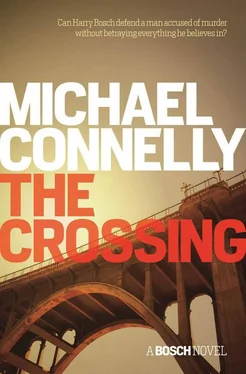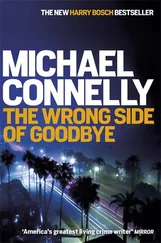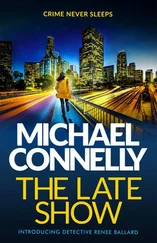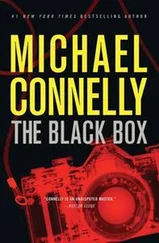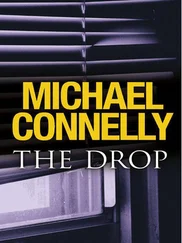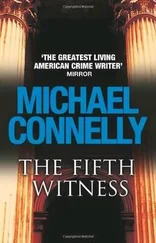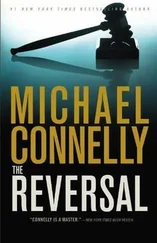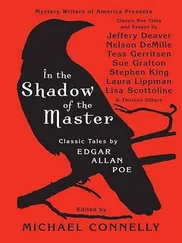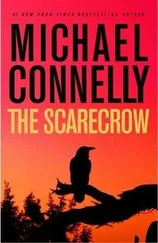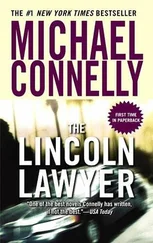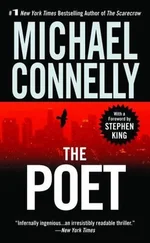Michael Connelly
The Crossing
In memory of Simon Christenson
Ellis and Long were four car lengths behind the motorcycle on Ventura Boulevard. They were eastbound, coming up to the big curve where the road would turn south and head down through the pass into Hollywood.
Ellis was behind the wheel, where he preferred to be, even though he was the senior partner and could dictate to Long who drove and who rode shotgun. Long was looking down at the screen on his phone, staring at the video feed, watching over what they called their investments.
The car felt good. It felt strong. There was little play in the wheel. Ellis felt solidly in control. He saw an opening in the right lane and pushed his foot down. The car jumped forward.
Long looked up.
“What are you doing?”
“Getting rid of a problem.”
“What?”
“Before it’s a problem.”
He had caught up and was now riding next to the motorcycle. He glanced over and saw the rider’s black boots and the orange flames painted on the gas tank. The flames matched the color of the Camaro.
He pulled a few feet ahead and as the road curved right he allowed the car to drift into the left lane, following the laws of centrifugal force.
He heard the rider yell. He kicked at the side of the car and then gunned it to try to move ahead. That was his mistake. He should have braked and bailed but he tried to gun his way out of it. Ellis was ready for the move and pinned the accelerator. The Camaro surged into the left lane, completing the cutoff.
Ellis heard brakes squeal and a long sustained blast of a car horn as the motorcycle went into the oncoming traffic lanes. Then he heard the high-pitched scraping of steel and the inevitable impact of metal against metal.
Ellis smiled and kept going.
It was a Friday morning and the smart people had already taken off for the weekend. This made traffic into downtown a breeze and Harry Bosch got to the courthouse early. Rather than wait for Mickey Haller on the front steps, where they had agreed to meet, he decided to look for his lawyer inside the monolithic structure that covered half a block of space nineteen floors into the air. But the search for Haller would not be as difficult as the size of the building suggested. After clearing the lobby metal detector — a new experience for him — Bosch took an elevator up to fifteen and started checking courtrooms and using the stairs to work his way down. Most of the courtrooms assigned to criminal cases were on floors nine through fifteen. Bosch knew this because of the time he’d spent in those courtrooms over the last thirty years.
He found Haller in Department 120 on the thirteenth floor. Court was in session but there was no jury. Haller had told Bosch he had a motion hearing that would finish by their lunchtime appointment. Harry slipped onto a bench in the back of the public gallery and watched as Haller questioned a uniformed Los Angeles police officer on the witness stand. Bosch had missed the preliminaries but not the meat of Haller’s examination of the officer.
“Officer Sanchez, what I would like you to do now is go through the steps that led to your arresting Mr. Hennegan on December eleventh of last year,” Haller said. “Why don’t we start with what your assignment was that day.”
Sanchez took a moment to compose an answer to what seemed to be a routine question. Bosch noticed that he had three hash marks on his sleeve, one for every five years with the department. Fifteen years was a lot of experience and that told Bosch that Sanchez would be very wary of Haller as well as skilled at giving answers more helpful to the prosecution than the defense.
“My partner and I were on routine patrol in Seventy-seventh Street Division,” Sanchez said. “We happened to be traveling westbound on Florence Avenue at the time of this incident.”
“And Mr. Hennegan was also traveling on Florence Avenue?”
“Yes, that’s correct.”
“Which direction was he going?”
“He was also going west. His car was directly in front of us.”
“Okay, and then what happened?”
“We came to a red light at Normandie and Mr. Hennegan came to a stop and then we stopped behind him. Mr. Hennegan engaged his right turn signal and then turned right to go northbound on Normandie.”
“Did he commit a traffic code infraction by turning right when the light was red?”
“No, he did not. He came to a complete stop and then made the turn when it was clear.”
Haller nodded and checked something off on a legal pad. He was sitting next to his client, who was in county blues — a sure sign that this was a felony case. Bosch guessed it was a drug case and that Haller was trying to suppress whatever was found in his client’s car by claiming it was a bad stop.
Haller was questioning the witness from his seat at the defense table. Without a jury, the judge was not requiring the formality of standing when addressing a witness.
“You made the turn as well, following Mr. Hennegan’s car, correct?” he asked.
“That is correct,” Sanchez said.
“At what point did you decide to conduct a traffic stop on Mr. Hennegan’s vehicle?”
“It was right away. We lit him up and he pulled over.”
“Then what happened?”
“The minute he stopped the car, the passenger door opened and the passenger bolted.”
“He ran?”
“Yes, sir.”
“Where did he go?”
“There is a shopping plaza there with an alley behind it. He went into the alley in an easterly direction.”
“Did either you or your partner give chase?”
“No, sir, it would be against policy and dangerous to separate. My partner got on the radio and requested backup and an airship. He broadcast a description of the man who ran.”
“An airship?”
“A police helicopter.”
“Got it. What did you do, Officer Sanchez, while your partner was on the radio?”
“I exited the patrol car and moved to the driver’s side of the vehicle and told the driver to put his hands out the window, where I could see them.”
“Did you draw your weapon?”
“Yes, I did.”
“Then what happened?”
“I ordered the driver — Mr. Hennegan — to step out of the vehicle and lie down on the ground. He complied and then I handcuffed him.”
“Did you tell him why he was under arrest?”
“At that time he was not under arrest.”
“He was handcuffed facedown on the street but you are saying he was not under arrest?”
“We didn’t know what we had and my concern was for the safety of myself and my partner. We’d had a passenger bolt from the car, so we were suspicious about what was going on here.”
“So the man bolting from the car was what set all of this in motion.”
“Yes, sir.”
Haller flipped some pages on his yellow pad to look at notes and then checked something on the screen of his laptop, which was open on the defense table. His client had his head tilted down, and from behind, it looked as though he might be asleep.
The judge, who had been slumped so low in his seat that Bosch had only been able to see the top of his gray head, cleared his throat and leaned forward, revealing himself to the courtroom. The placard at the front of the bench identified him as the Honorable Steve Yerrid. Bosch didn’t recognize him or his name, which didn’t mean a whole lot, since the building housed more than fifty courtrooms and judges.
“Nothing further, Mr. Haller?” he asked.
“I’m sorry, Your Honor,” Haller said. “Just checking some notes.”
“Let’s keep this moving.”
Читать дальше
